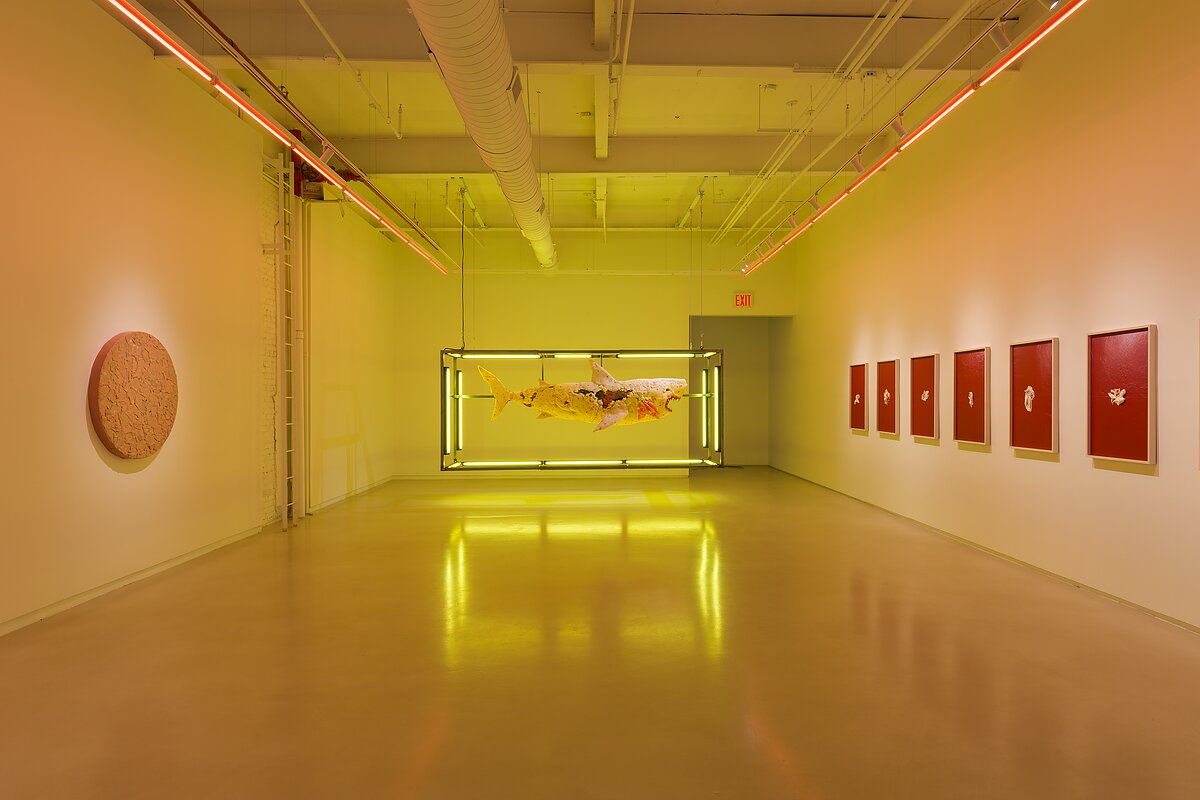The Power of the Uncanny in Contemporary Political Art
In 1977, the German philosopher Herbert Marcuse famously argued in his book, The Aesthetic Dimension that the revolutionary potential of art lies not in its alignment with the working class or “the revolution” but rather in its ability to reveal the true nature of the world “by virtue of the form given to the content.” This perspective builds upon Theodor Adorno’s theory that the political potential of aesthetics is deeply intertwined with its form, not just its content.
Contemporary art that engages with political themes, marginality, and racial oppression often tends to be interpreted as overly literal, where content takes precedence over form. However, effective political art goes beyond mere literalism. When successful, it harnesses the power of the uncanny, a concept described by Freud as “that class of the terrifying which leads back to something long known to us, once very familiar.”
The uncanny is disruptive because it brings to the surface what is usually repressed and hidden, unveiling the surreal aspects of “real life,” especially for marginalized individuals. In German, the term for uncanny, unheimlich, can also be translated as “unhomely.” For marginalized people, this feeling of being a stranger even in one’s own home can be unsettling and unnerving. The uncanny, as an aesthetic form, provokes discomfort by presenting the familiar in unfamiliar ways, employing dizzying repetition, and resurfacing history through alternative narratives.
Furthermore, elevating elements of real life to the status of fine art is itself uncanny, reminiscent of Duchampian art. This elicits contemporary concerns related to the contradictions of capitalism and taste, hegemony and empire, and planetary destruction. Recent exhibitions effectively utilizing the uncanny in political art include Josh Kline’s “Project for a New American Century” at the Whitney, Tuan Andrew Nguyen’s “Radiant Remembrance” at the New Museum, and King Cobra’s “White Meat” at JTT Gallery.
Not only do these exhibitions challenge literal interpretations of art, but they also incorporate the uncanny in their material choices and presentation. Prosthetic body parts, plaster-mold reproductions, and mimetic symbols are central to the artistic practices of these three artists. Josh Kline, for instance, confronts viewers with the discomfort of FedEx worker body parts displayed in repetitive variations, the shattered dreams of home ownership, suffocating businessmen, and the abuse of working-class biopower.
In Tuan Andrew Nguyen’s film, The Unburied Sounds of a Troubled Horizon (2022), a gold prosthetic arm used on a Vietnam War victim and an M117 bomb repurposed as a religious bell in Unexploded Resonance(2022) serve as metallic reminders of enduring traumas.
King Cobra, in their “Cracker” (2023) series, reproduces smallpox-afflicted skin, while their Rat King (2023) features white dreadlocks, and Salome’s Revenge (2023) presents a rendering of the infamous obstetric physician J. Marion Sims’s head in baloney, unearthing the decay of white conscience. These artists use mimetic references to familiar objects, assembling them to evoke unsettling feelings within the religious sublime of the museum pedestal.
What these artists achieve is a deep-seated sense of racial melancholia. Racial melancholia, as first described by Anne Anlin Cheng in The Melancholy of Race: Psychoanalysis, Assimilation, and Hidden Grief, and further explored in David L. Eng and Shinhee Han’s Racial Melancholia, Racial Dissociation, refers to “the internalization of discipline and rejection, along with the establishment of a scripted context of perception.” It is a psychic strategy developed in response to rejection by the dominant society. Like the uncanny, racial melancholia can be seen as a type of distorted mirror between the object, subject, and the agency of gaze, fundamentally altering its nature and interpretation. Nguyen, Cobra, and Kline each employ different strategies to address and express this feeling of racial melancholia.
Tuan Andrew Nguyen approaches these experiences indirectly. Despite focusing explicitly on an imperialist war waged by the U.S. on Vietnamese soil, Nguyen’s work deliberately omits white people or agents of war, focusing instead on the traumas etched into skin and soil. His video works are disarmingly gentle, subtly melancholic, and poetically stoic, possessing a hypnotic nuance. By staging his own form of rejection, Nguyen reclaims narratives of the war.
In contrast, King Cobras’s grotesque portrayals of white skin lay bare white greed and sadism. These works offer a full-frontal display of abjection in its rawest form. This rawness is subversively vulnerable to the agentic rei(g)n of Garner to chain, slice, pierce, adorn, and display racially-motivated crimes committed in the name of skin. Melancholic is the stillness of each loud piece situated in the sterile context of the art space, under neon lights and glass displays.
Josh Kline, of Filipino and white American descent, demonstrates a more implicit form of racial melancholia. These emotions are evident in the glib and dystopic tone of his work. Kline’s frenetic, crowded repetitions throughout his exhibitions highlight the abjectness of humanity hurtling toward self-destruction, where racialized workers are reduced to mere components of drug concoctions with melting dreams of homeownership.
While critics have labeled Kline’s Whitney exhibition as “an exercise in poverty porn,” accusing it of exploiting contemporary dystopia for profit, I believe that Kline’s sardonic insolence and the agency of low-brow objects as aesthetic forms should be given more attention for their exploration of racialized agency.
Saturated with contrasts between irony and sincerity, messiness and neatness, hope and despair, the political art of these young artists of color in the U.S. critically engages with aesthetics as a deep reflection of society and as a means of fostering critical dialogue. Their work powerfully illustrates how deep-seated feelings of uncanniness and racial melancholia are pervasive in any attempt to unravel the surreal aspects of “real life,” which are often too close to see clearly.
—Youbin Kang is a PhD candidate in sociology at the University of Wisconsin-Madison.





